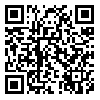1. Rosse RB. The love trauma syndrome: free yourself from the pain of a broken heart. Cambridge, MA: Da Capo Press; 2007, pp:36–7.
2. Jacob GA, Arntz A. Schema therapy for personality disorders—a review. International Journal of Cognitive Therapy. 2013;6(2):171–85. [
DOI]
3. Asayesh MH, Qazinejad N, Bahonar F. Explanation of the emotional reactions of girls with love trauma syndrome: a qualitative study. The Women and Families Cultural-Educational. 2021;15(53):125–54. [Persian] [
Article]
4. Eken E. The role of early maladaptive schemas on romantic relationships: a review study. PEOPLE: International Journal of Social Sciences. 2017;3(3):108–23. [
DOI]
5. Karatzias T, Jowett S, Begley A, Deas S. Early maladaptive schemas in adult survivors of interpersonal trauma: foundations for a cognitive theory of psychopathology. Eur J Psychotraumatol. 2016;7:30713. [
DOI]
6. Taylor PM, Uchida Y. Awe or horror: differentiating two emotional responses to schema incongruence. Cogn Emot. 2019;33(8):1548–61. [
DOI]
7. Seligman MEP, Schulman P, Tryon AM. Group prevention of depression and anxiety symptoms. Behav Res Ther. 2007;45(6):1111–26. [
DOI]
8. Sdaghat F, Rafiipour A, Samavi A. Moghayese noshkhar fekri dar daneshjouyan ba va bedoun neshanegan zarbe eshgh shar Bandar Abbas [Comprison of rumination in students with and withgout hit love syndrome in Bandar Abbas city]. New Advance in Behavioral Science. 2016;1(3):75–81. [Persian] [
Article]
9. Kennedy C, Deane FP, Chan AYC. Intolerance of uncertainty and psychological symptoms among people with a missing loved one: emotion regulation difficulties and psychological inflexibility as mediators. Journal of Contextual Behavioral Science. 2021;21:48–56. [
DOI]
10. Fagundes CP. Implicit negative evaluations about ex–partner predicts break–up adjustment: the brighter side of dark cognitions. Cogn Emot. 2011;25(1):164–73. [
DOI]
11. Tashiro T, Frazier P. "I’ll never be in a relationship like that again”: personal growth following romantic relationship breakups. Personal Relationships. 2003;10(1):113–28. [
DOI]
12. Schneier FR. Social anxiety disorder. BMJ. 2003;327(7414):515–6. [
DOI]
13. Shabani Khadiv A, Ahmadiyan H. Studying the relationship between of basic psychological needs satisfaction and the emotional regulation disorder with the mediation of early maladaptive schemas at Bu–AliSina university students. Knowledge & Research in Applied Psychology. 2019;20(1):101–11. [Persian] [
DOI]
14. Shimek C, Bello R. Coping with break–ups: rebound relationships and gender socialization. Social Sciences. 2014;3(1):24–43. [
DOI]
15. Kweon SH, Lee S. A study on empathy, credibility, and political attitude in social media: focused on the relationship between empathetic intention and the motivation of belonging on intended pro–social and political behavior. Advances in Journalism and Communication. 2013;1(3):26–40. [
DOI]
16. Habibi A, Adanvar M. Structural equation modeling and factor analysis (practical training of LISREL software). Tehran: Iranian Students Booking Agency; 2017, pp:113. [Persian]
17. Garnefski N, Kraaij V. Cognitive emotion regulation questionnaire – development of a short 18–item version (CERQ–short). Personality and Individual Differences. 2006;41(6):1045–53. [
DOI]
18. Besharat MA, Bazzazian S. Psychometri properties of the cognitive emotion regulation questionnaire in a sample of Iranian population. Advances in Nursing & Midwifery. 2015;24(84):61–70. [Persian] [
Article]
19. Young JE. Young schema questionnaire–short form [Internet]. 2018 [cited 2023 Sep 10]. Available from: [
DOI]
20. Schmidt NB, Joiner TE, Young JE, Telch MJ. The schema questionnaire: investigation of psychometric properties and the hierarchical structure of a measure of maladaptive schemas. Cogn Ther Res. 1995;19(3):295–321. [
DOI]
21. Ghahari S, Viesy F, Kavand H, Yeke Fallah M, Zandifar H, Farrokhi N, et al. Psychometric properties of early maladaptive schemas questionnaire short form–75 items (YSQ–SF). Nurse and Physician Within War. 2020;8(27):31–40. [Persian] [
Article]
22. Dehghani M, Atef–Vahid MK, Gharaee B. Efficacy of short–term anxiety–regulating psychotherapy on love trauma syndrome. Iran J Psychiatry Behav Sci. 2011;5(2):18–25.
23. Hu L, Bentler PM. Cutoff criteria for fit indexes in covariance structure analysis: Conventional criteria versus new alternatives. Structural Equation Modeling: A Multidisciplinary Journal. 1999;6(1):1–55. [
DOI]
24. Araghi L, Shafiabadi A, Delavar A, Mardani Rad M. Developing a structural model of love failure based on personality traits, attachment style, early maladaptive schemas, parenting patterns and perceived social support factors. Clinical Psychology Studies. 2020;10(40):47–75. [Persian] [
DOI]
25. McDermott N. Early maladaptive schemas, attachment, negative affect and relationship satisfactionrelationship satisfactio [thesis in M.A.] [Internet]. [Glassboro, US]: Rowan University; 2008. Available from: [
Article]
26. Nicol A, Kavanagh PS, Murray K, Mak AS. Emotion regulation as a mediator between early maladaptive schemas and non–suicidal self–injury in youth. Journal of Behavioral and Cognitive Therapy. 2022;32(3):161–70. [
DOI]
27. Salgó E, Bajzát B, Unoka Z. Schema modes and their associations with emotion regulation, mindfulness, and self–compassion among patients with personality disorders. Borderline Personal Disord Emot Dysregul. 2021;8(1):19. [
DOI]
28. Garnefski N, Kraaij V. Relationships between cognitive emotion regulation strategies and depressive symptoms: a comparative study of five specific samples. Personality and Individual Differences. 2006;40(8):1659–69. [
DOI]
29. Zade–Mohammadi A, Kordestanchi Aslani H. The mediating role of cognitive emotion regulation in the relationship of early maladaptive schemas with spouse abuse. Iranian Journal of Psychiatry and Clinical Psychology. 2021;26(4):502–23. [Persian] [
DOI]
30. Malik S, Wells A, Wittkowski A. Emotion regulation as a mediator in the relationship between attachment and depressive symptomatology: a systematic review. J Affect Disord. 2015;172:428–44. [
DOI]

 ، مجید ضرغام حاجبی*2
، مجید ضرغام حاجبی*2 
 ، رامین تبرایی2
، رامین تبرایی2 




